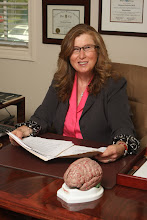The Mayo Clinic released the following announcement:Do you know you're having a stroke?Symptom awareness can improve recoveryA Mayo Clinic study shows a majority of stroke patients don't thinkthey're having a stroke -- and as a result -- delay seeking treatmentuntil their condition worsens. The findings appear in the current issueof Emergency Medicine Journal at http://emj.bmj.com/.
Researchers studied 400 patients who were diagnosed at Mayo Clinic'semergency department with either acute ischemic stroke or a transientischemic attack (TIA), a temporary interruption of blood flow to part ofthe brain.Less than half of the patients -- 42 percent -- thought they were havinga stroke. In fact, most in the study did not go to the emergency roomwhen symptoms appeared. The median time from onset of symptoms toarrival at the hospital was over three and a half hours. Most said theythought the symptoms would simply go away. The delay in seeking medicalhelp was the same among men and women.When asked how they knew about stroke symptoms, nearly one-fifth saidthey thought a stroke always came on gradually. Just over half (51.9percent) said they thought that seeking medical care immediately wasimportant.Significance of the findings"Time is crucial in treating stroke," says Latha Stead, M.D., emergencymedicine specialist and lead author of the study. "Each individual'smedical background differs and affects recovery, but in general thesooner a patient experiencing a stroke reaches emergency care, the morelikely the stroke can be limited and the condition managed to preventfurther damage and improve recovery." The researchers say their findingsclearly indicate that better public
understanding of stroke symptomswill lead to a faster response and better outcomes.What you should knowStrokes can happen quickly or can occur over several hours, with thecondition continually worsening. The thrombus or clot that is causingthe stroke can frequently be dissolved or disintegrated so blood canagain flow to the brain. In such cases, immediate treatment can mean thedifference between a slight injury and a major disability. Interestinglyonly 20.8 percent of the participants knew about such treatment. By useof stents, medications and other technology, physicians can stop astroke from spreading and greatly limit damage. Stroke symptoms include:
* Sudden numbness, weakness, or paralysis of your face, arm or leg-- usually on one side of the body
* Sudden difficulty speaking or understanding speech (aphasia)
* Sudden blurred, double or decreased vision
* Sudden dizziness, loss of balance or loss of coordination
* A sudden, severe "bolt out of the blue" headache or an unusualheadache, which may be accompanied by a stiff neck, facial pain, painbetween your eyes, vomiting or altered consciousness
* Confusion or problems with memory, spatial orientation or perceptionIn such cases, a stroke gives no warning. But one possible sign of animpending stroke is a TIA.
The signs and symptoms of TIA are the same asfor a stroke, but they last for a shorter period -- several minutes to afew hours -- and then disappear, without leaving apparent permanenteffects. You may have more than one TIA, and the signs and symptoms maybe similar or different. A TIA indicates a serious risk that a full-blown stroke may follow
Subscribe to:
Post Comments (Atom)


No comments:
Post a Comment